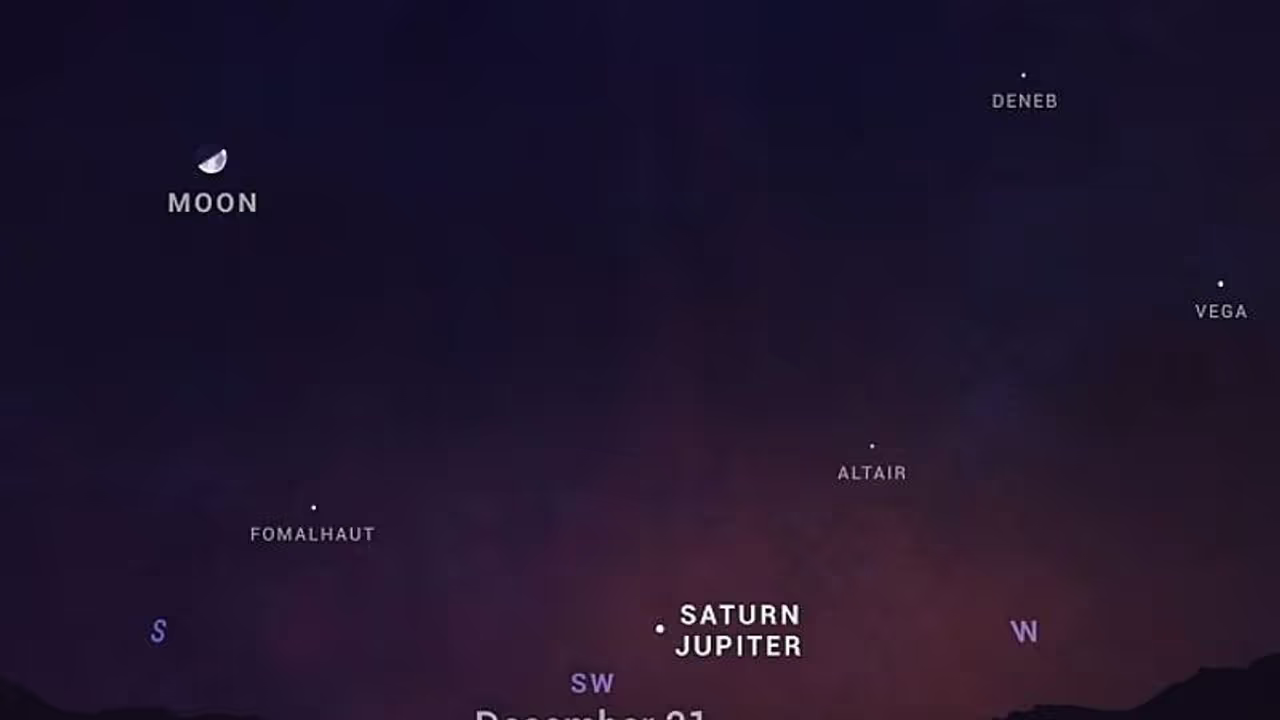The 2020 'Great Conjunction' of Saturn and Jupiter is the closest these planets will appear in the sky since 1623 – just after Galileo first observed them with his telescope. The celestial treat can be photographed easily on DSLR cameras and many cell phone cameras. Here are a few tips to keep in mind
On the evening of closest approach on December 21, Jupiter and Saturn will look like a double planet, separated by only 1/5th the diameter of the full moon. The celestial treat will be visible across the planet, though the best viewing conditions will be near the equator. Here's how you can see the celestial wonder up close. (Information Courtesy: NASA)

If you are using a cell phone camera
* Jupiter and Saturn will be bright enough to detect in many cell phone cameras. You won't see additional detail by zooming in, but you can frame Jupiter and Saturn creatively.
* Some recent cell phones have a 'night mode', which will automatically stabilize a long-exposure, even without using a tripod. This can be great for capturing the dark foreground of your photo. Some phones will let you use ‘night mode’ on exposures up to 30 seconds, if you also use a tripod.
* Many cell phones have a wide-angle lens. Try using this to place a subject in the foreground, with Jupiter and Saturn above them. At the time of conjunction on December 21, Jupiter and Saturn may be too close to separate clearly in your photos. Images taken a few days before or after the conjunction may show them more clearly.
* These planets are visible in early evening, and you'll have about 1-2 hours from when they are visible, to when they set. The color and intensity of the sky changes during that time. Stay out for an hour or more, and try to capture shots with both the bright colors of sunset, and the darkness of the oncoming night. A photo from the same location can look completely different just an hour later!
If you are using a DSLR camera
* Set your focus to Infinity (Manual Focus mode), so the planets will be sharp. Set your aperture wide open, to let in the maximum amount of light.
* If you have a tripod, it will help you take long exposures. If not, you can still take some great pictures with a short shutter speed (< 1/4 second). If your camera or lens has an image stabilizer, be sure it is turned on.
* If your photos show that the camera is not steady, shorten your shutter speed. You can also use a photographers’ trick to get a sharp photo when hand-holding: set up your camera to take multiple exposures, then hold the shutter button to take a series of photos. While some will be blurry due to camera shake, you may find a few that are sharp.
* If you use a 200 mm telephoto lens, you should be able to see Jupiter's four bright moons in a short exposure. Saturn’s rings will usually need a longer lens or a telescope in order to resolve clearly.
* To capture Jupiter and Saturn as sharp 'points' while using a tripod, use a shutter speed of up to a few seconds. More than this and the Earth's rotation will smear out the planets and stars. If you are using a wide-angle lens, you can use a longer exposure.
* Experiment with both wide-angle and telephoto shots. In early December, the two planets will be about 2 degrees apart, and will get progressively close toward December 21. In order to show them clearly in your photos, you might use a wide-angle composition early in December, and zoom in later in the month as they get closer.
